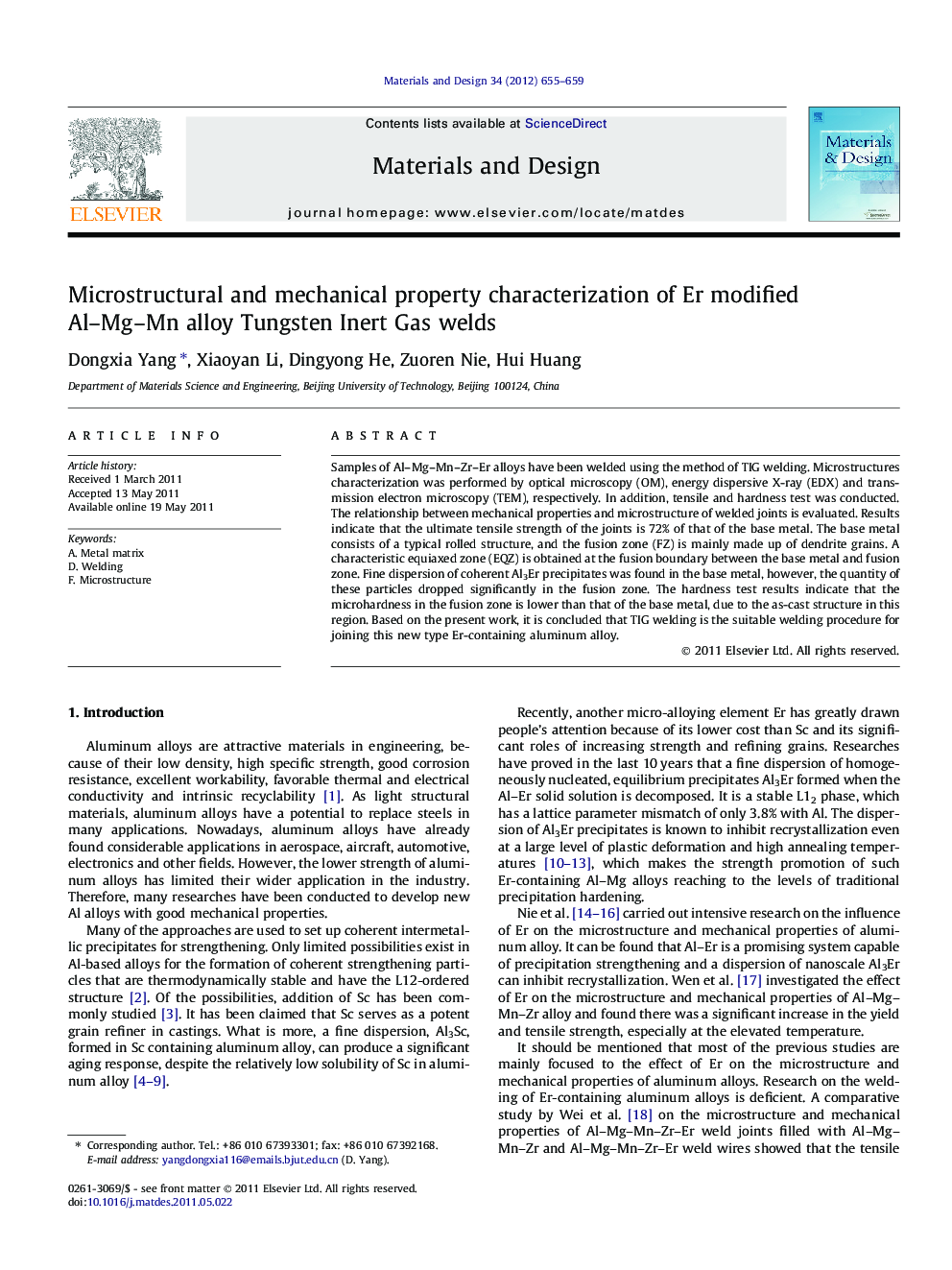| کد مقاله | کد نشریه | سال انتشار | مقاله انگلیسی | نسخه تمام متن |
|---|---|---|---|---|
| 831091 | 1470363 | 2012 | 5 صفحه PDF | دانلود رایگان |

Samples of Al–Mg–Mn–Zr–Er alloys have been welded using the method of TIG welding. Microstructures characterization was performed by optical microscopy (OM), energy dispersive X-ray (EDX) and transmission electron microscopy (TEM), respectively. In addition, tensile and hardness test was conducted. The relationship between mechanical properties and microstructure of welded joints is evaluated. Results indicate that the ultimate tensile strength of the joints is 72% of that of the base metal. The base metal consists of a typical rolled structure, and the fusion zone (FZ) is mainly made up of dendrite grains. A characteristic equiaxed zone (EQZ) is obtained at the fusion boundary between the base metal and fusion zone. Fine dispersion of coherent Al3Er precipitates was found in the base metal, however, the quantity of these particles dropped significantly in the fusion zone. The hardness test results indicate that the microhardness in the fusion zone is lower than that of the base metal, due to the as-cast structure in this region. Based on the present work, it is concluded that TIG welding is the suitable welding procedure for joining this new type Er-containing aluminum alloy.
► The microstructural characterization of TIG welded Al–Mg–Mn–Zr–Er alloy is studied.
► A typical equaixed zone (EQZ) with finer grains is observed in the weld metal at the fusion boundary.
► The dissolution of non-primary Al3Er particles in Al matrix is one reason of the weakness of TIG welded joint.
► The relationship between mechanical properties and microstructure of welded joints is evaluated.
► Reasons for joint softening are given from work-hardening, precipitation strengthening and solution strengthening.
Journal: Materials & Design - Volume 34, February 2012, Pages 655–659